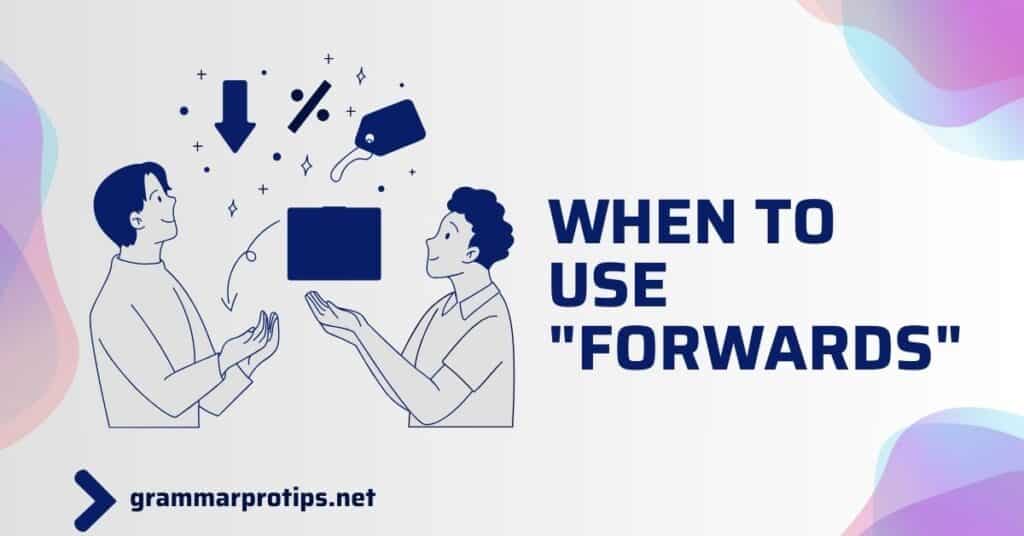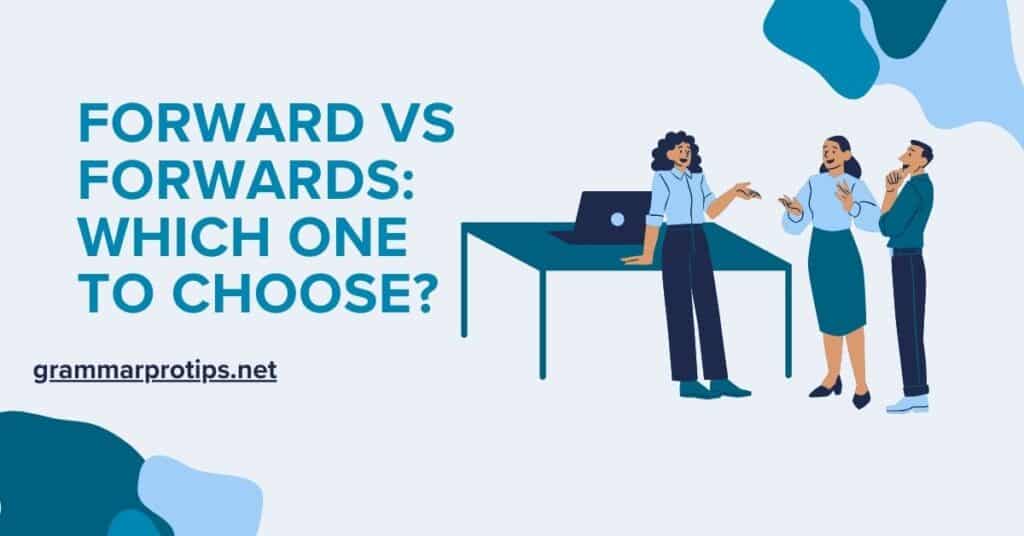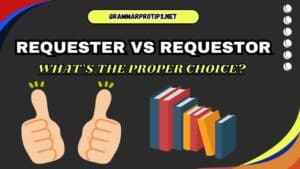Understanding the difference between “forward” and “forwards” can be a tricky aspect of the English language. Both words are related to movement in the same direction, but they are used in slightly different ways depending on context, formality, and style. In this article, we’ll explore the distinctions between forward vs forwards, and provide practical examples, including how they are used in sentences, emails, and everyday communication.
By the end, you’ll know exactly when to use each version.
What is the Difference Between Forward and Forwards?
At its core, forward and forwards both refer to movement toward a point ahead, but forward is considered the more standard, formal choice in most contexts, while forwards is often used in informal speech or writing.
However, this isn’t a hard and fast rule both words can appear in different settings.
Forward: The Preferred Choice in Formal Writing
Forward is commonly used in more formal contexts, especially in written English. It is generally preferred in business communication, professional emails, and academic writing. It is often used in American English in both its literal and figurative senses.
Forwards: More Casual and Often Seen in Speech
Forwards, on the other hand, is more informal and often seen in everyday speech. While it is not incorrect, it tends to be used less frequently in formal writing. It is particularly common in British English, though both forms are understood worldwide.
A Quick Overview:
| Term | Usage |
|---|---|
| Forward | More formal, used in business, professional writing, and academic contexts. |
| Forwards | More casual, frequently used in conversation, informal writing, and British English. |
When to Use “Forward”
The word forward is most often used when speaking about something moving toward a specific point in time, space, or direction. For example:
- Business email:
“I’ll forward the updated report to you by the end of the day.” - Formal writing:
“The company plans to expand forward into international markets.” - Action:
“He moved forward after hearing the announcement.”
In these cases, forward tends to feel cleaner, more polished, and more appropriate for a professional setting.
Scenario Example: A Business Email
Let’s say you’re working at a company and need to send an update to a colleague.
Subject: Update on Project Status
Dear John,
I hope this email finds you well. I wanted to forward the latest project updates. You will find attached the documents we discussed earlier. I’ve highlighted the key points in the summary for quick reference.
Please let me know if you have any further questions. I’m happy to provide more details or clarify anything you may need.
Best regards,
Sarah
In this professional context, “forward” is used to indicate the action of sending information along.
When to Use “Forwards”

While “forwards” is often seen as the less formal choice, it isn’t entirely incorrect. It can sometimes be used in place of “forward”, especially in more relaxed, casual writing or conversation. It’s also important to note that in certain phrases, “forwards” is preferred even in formal contexts, such as in British English or when describing movement in sports.
Example Sentences:
- “He looked forwards to meeting the team at the conference.”
- “We will be moving forwards with the new project starting next week.”
Notice that “forwards” is more natural in some spoken forms and can even give a slightly friendlier, conversational tone to your message.
Scenario Example: Casual Conversation
If you’re talking to a friend about future plans, you might say something like:
“Hey, I’m really looking forwards to our weekend trip. It’s going to be a blast!”
Here, forwards is used because the tone of the conversation is casual and friendly, and it feels more conversational.
Forward vs Forwards in Different Contexts
Looking Forward or Looking Forwards?
Both “looking forward” and “looking forwards” are acceptable, but the version with “forward” is more commonly used, especially in formal contexts. When you are anticipating something in the future, you would say:
- “I’m really looking forward to seeing you this weekend.”
- “She’s looking forward to hearing back about the job offer.”
However, you might occasionally hear people use “looking forwards” in speech, especially in British English, though it’s generally considered less formal.
Moving Forward vs Moving Forwards
When discussing the future or progress, both “moving forward” and “moving forwards” are common phrases. But “moving forward” is the preferred version in professional and formal contexts.
- “The team is moving forward with the project after the initial setbacks.”
- “We are excited to be moving forwards with new plans for next year.”
Again, “moving forward” tends to sound more polished, while “moving forwards” is more relaxed.
Going Forward or Going Forwards?
When discussing the future or the direction of a particular action, both “going forward” and “going forwards” can be used, though “going forward” is again the more common and widely accepted choice in formal writing. You might see “going forwards” more in conversational or informal contexts.
Examples:
- “We will be going forward with the new strategy.”
- “The company is going forwards with their expansion plans.”
“Going forward or moving forward” are often used as synonyms, meaning progress or advancement. They are interchangeable in most cases, though “moving forward” tends to be used more in professional settings.
Going Forward or Going Forwards in a Sentence
Let’s take a closer look at how both versions play out in context:
- Going Forward:
“We plan to implement the new system going forward.” - Going Forwards:
“The team will need to keep adapting going forwards to stay competitive.”
Both phrases convey a similar idea, but “going forward” is cleaner and more acceptable in formal writing, while “going forwards” is more common in casual conversation.
A Handy Grammar Guide for Forward vs Forwards
Here’s a quick grammar breakdown:
- Forward: More formal, used to describe movement or progress. It can be used as both an adjective (e.g., “forward motion”) and a verb (e.g., “I will forward the message”).
- Forwards: Less formal, often used in speech, especially in British English. It also appears more frequently in expressions like “looking forwards to” or “moving forwards.”
Forward vs Forwards: Which One to Choose?

Formal Settings:
- Use forward for business emails, academic writing, and formal communication. It’s the standard, accepted version.
- Example: “Please forward the document by Friday.”
Informal Settings:
- Use forwards in casual conversations, friendly emails, and less formal communication.
- Example: “I’m looking forwards to seeing you soon!”
Common Mistakes to Avoid
- Don’t Overuse “Forwards”: While “forwards” is perfectly fine in conversation, it’s less suitable in professional or academic writing.
- Watch for Context: While both words often mean the same thing, “forward” can sometimes be more concise and appropriate for written communication.
Final Thoughts on Forward vs Forwards
Whether you choose to use forward or forwards depends largely on the context, formality, and style of communication. Both have their place, but remember that in formal settings such as emails, business reports, or academic papers forward is usually the safer bet. On the other hand, if you’re having a chat with a friend or writing informally, forwards may feel more natural. Always pay attention to your audience and the tone you wish to set!

Sienna Mauldon is a passionate writer and grammar expert. On her blog, she shares easy-to-follow guides to help readers master grammar rules and improve their writing. With a love for language and teaching, Sienna makes grammar simple and fun for everyone, from beginners to experienced writers.








